The Inpatient Review - A slow nostalgic journey
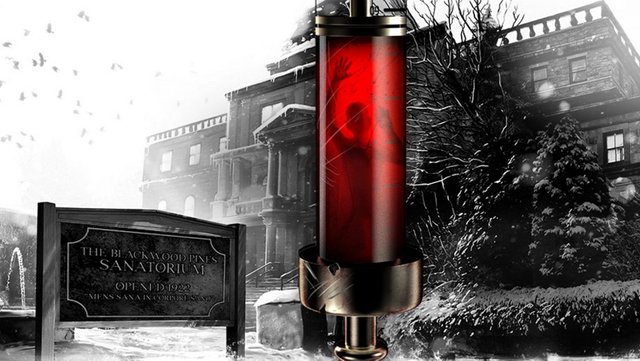
When Supermassive Games released Until Dawn it was received with much love. The characters were all varied and interesting; the inspiration of classic 'slashers' films, such as Friday the 13th, performed immensely well; and the emphasis was on the choice of the player who was important to the outcome of the plot. Now the developer is back with a PlayStation VR game called The Inpatient, which takes place in the same universe, but about 60 years for the teenagers from Until Dawn to Blackwood Pines.
You do not have to play Until Dawn to play The Inpatient. There are relatively few direct links between the two stories. It is his small details that you recognize, such as hearing familiar names and places, but on the other hand there is no connection between the two. Instead, you take a completely independent story that revolves around you: a patient, who leads to amnesia, at the Blackwood Pines Sanatorium. Here you have to unravel the mysteries of the place and find out why you are there. It took us between 3 to 4 hours to complete the game; we would give away too much if we were to dive deeper into the story. What we can say is that there are many familiar elements for players who Until Dawn played and accomplished.
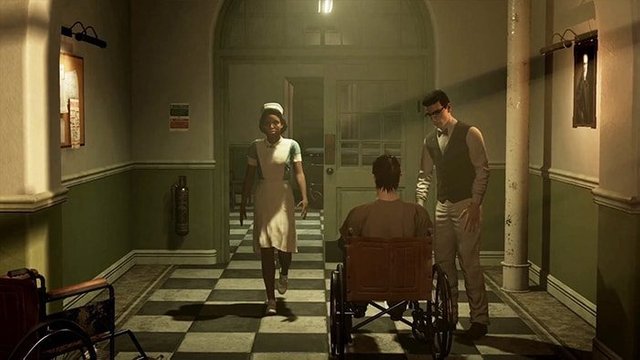
You play The Inpatientin its entirety from a first-person perspective, where - unlike some other games - your arms and legs are stuck in-game to you. This means that your arms move when you move the Move controllers (you can also play with the DualShock 4 controller, but Move controllers make the experience far more engaging, especially since the motion control on the DualShock makes many simple actions much more difficult) . If you bend your arms in an unnatural way, then that looks strange in the game. Still, it is still nice to have your entire body in the game, although your hands are not always 'tracked' properly. For example, the Move controllers vibrate when they come against something (for example the other hand), but sometimes it seems like they do not have anything to do with it. You also can not move your arms if there is an object or obstacle in the way, causing your arms to suddenly return to the position you hold them when this obstruction disappears or moves. This can make for a rather strange experience.
Something else with regard to the Move controllers: if you play with these you have to make sure that you have enough distance from your TV and that the PlayStation camera sees the entire room. Even if you sit, this can cause problems when you take something. For example, we often had trouble reaching things like doorknobs and desks, and we could have used more space in our room to make it easier to reach. It was also annoying that there are constantly large symbols on the screen if you keep the Move controller out of the range of the PS camera. Sometimes we just wanted to rest our hands while walking, but because these symbols continue to flash, you are actually forced to constantly move and play with your hands.
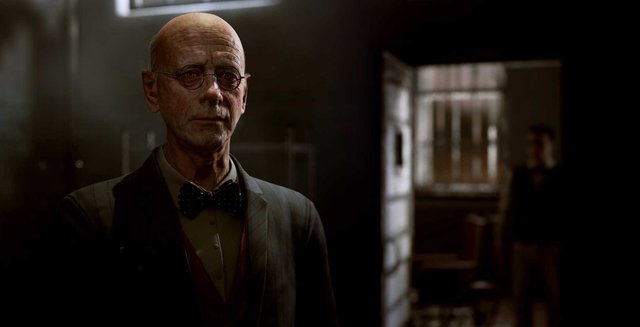
The tutorials during the beginning of the game are particularly useful for gradually guiding you through the experience without feeling like an average 'game tutorial'. At the beginning you sit in a chair and answer questions about your past while trying to get your memory back. Here you are introduced to the dialogue system, where you can choose two different voting options. Both contain explanations of what you say and what the tone is (for example "I feel great" in a sarcastic tone). It is very cool that you can use your own voice for these options.
Once the basic set-up has been established for your dialogue options, we are told how to move. Moves forward with the left Move controller's Move button and you can rotate through set angles or with the right Move controller. We recommend the set angles when turning, as we started to feel nauseous after a minute and put the headset off.
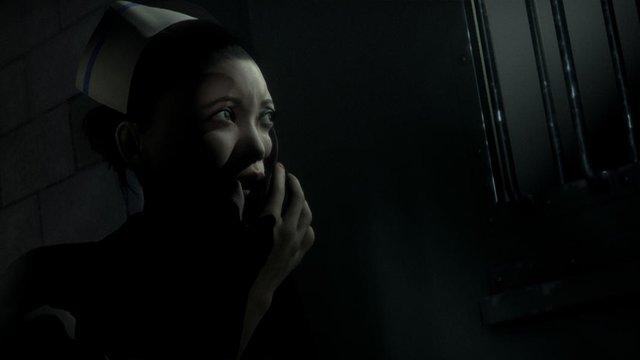
What is striking is that there is no option to take a step back and that is because, as far as we know, there is no way to walk backwards. If you have to use something and have walked past it, for example by pressing the button too long, you have to walk around (as if an airplane) to get back on the right path. In combination with dubious 'tracking' of the Move controllers, some simple tasks, such as viewing an object, were sometimes extremely frustrating to implement.
Another extremely annoying problem is the walking speed. We understand that it must be slow to prevent motion sickness and also to preserve the atmosphere, but it is sometimes extremely painful. Sometimes so bad that we wondered if we were still walking or we were just stuck by an obstacle for our feet (so you can not go forward). Sometimes it was logical, but for example in a dark cellar with only a flashlight it would have been nice to be able to move a little faster.
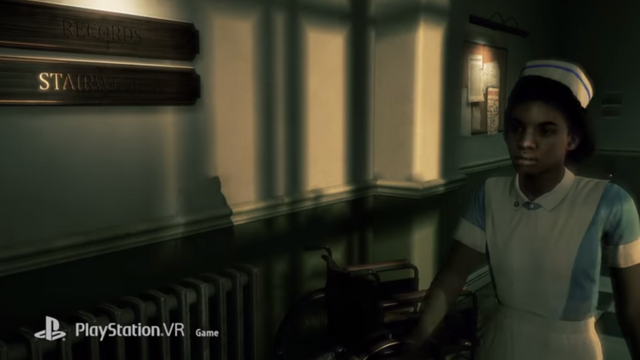
Since this is a narrative experience, it is worth discussing the story we are presented with. This is very intriguing in the first half of the game, where we see our seemingly safe life being messed up after a mysterious incident. This becomes even more mysterious because we constantly suffer from amnesia and end up in dreams in which all logic and common sense seems to disappear and everything becomes much darker. Finding objects that transport you to memories from the past - fragmented pieces that you have to try to tie a rope to - keeps the experience interesting and delivers the necessary questions.
However, the second half of the game changes into a kind of 'found footage' Hollywood film; where a group of survivors are frightened by every sound and try to maintain their mental health. The slow unraveling mystery and intrigue from the first half turns into a rather superficial expedition through dark tunnels and corridors leading to the end - which we did not even realize was the end of the game. It is true that the horror moments have been carried out effectively and ingeniously. We did not have to scare often, but that is because it was not used often and the atmosphere keeps you constantly on the edge of your chair. Especially after you have been shocked the first time.
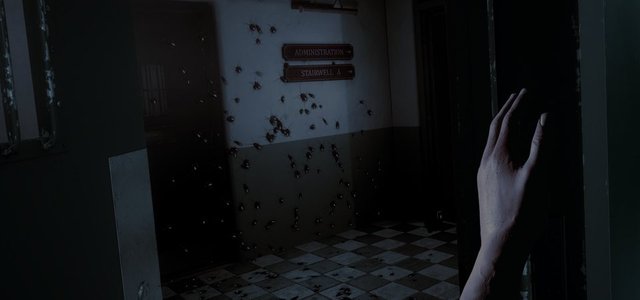
At the end of the game we were left with two conflicting thoughts. On the one hand, we were glad that we no longer had to crawl slowly through the dark corridors, on the other we felt that not all the answers of the different mysteries had been answered. Which was the case after playing Until Dawn . Of course, we knew that our choices would affect the outcome, but we did not feel that this was a real conclusion. One thing we certainly knew is that we did not want to play the game all the way through to find out everything, no matter how short the game may be.
✔ Effective fright moments; interesting first half; using memories are very intriguing; full body 'rendered', choices have clear consequences.
✖ Painfully slow walking speed; boring and insignificant second half of the plot; end is not satisfactory; control problems with Move controllers as well as DualShock; no backward option.
Thanks for reading, I hope you liked it!

Steem's Popularity Is Incredible!
Share the joy by inviting others!
Get More Exposure On The Chats!
It is a best way to get more exposure through private messages and in the chat rooms. These are some of the best places to get more exposure & makes Steem friends.
- Official Steemit.chat
- SteemSpeak.com @fyrstikken (24/7 Voice chat)
- Peace, Abundance, Liberty @aggroed @canadian-coconut @ausbitbank @teamsteem and More (Minnow Support Project)
For new & best authors to move forward!
http://curiesteem.com @curie
https://steemvoter.com @steemvoter @thecryptodrive @cryptomancer
My Latest Posts:
- Total War Warhammer 2 Rise of the Tomb Kings Review - Time for a new playthrough
- Telltale Batman Season 2 Episode 4 Review - What Ails You
- LA Noire The VR Case Files Review - A fantastic and careful transition to vr
- Street Fighter V Arcade Edition Review - Excellent fighting system
- Why fighters are inaccessible and how they could be

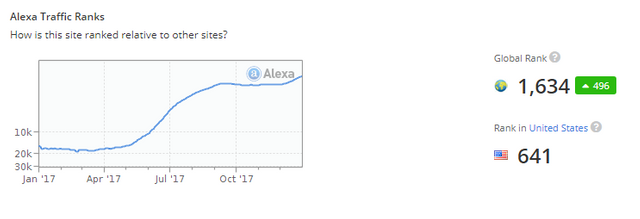
nice game
Good work at this post
Very Nice :)
And please support me